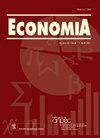Jobs’ Amenability to Working from Home: Evidence from Skills Surveys for 53 Countries
IF 1.4
Q3 ECONOMICS
Economia-Journal of the Latin American and Caribbean Economic Association
Pub Date : 2023-03-03
DOI:10.31389/eco.8
引用次数: 1
Abstract
We use skills surveys from 53 countries to estimate jobs’ amenability to working from home (WFH). Our measure combines data on self-reported jobs’ characteristics and home internet access into a standardized measure. We find that jobs’ amenability to WFH increases with economic development. Women, college graduates, and salaried and formal workers have jobs that are more amenable to WFH than the average. The opposite holds for workers in hotels and restaurants, construction, agriculture, and commerce. We validate our measure using longitudinal data from Chile and showing that WFH amenability correlates negatively with job losses between 2019 and 2020 and positively with the observed share of workers who worked from home in 2020. Finally, occupations explain less than one third of the variability in the WFH measure and its components, highlighting the importance of using individual-level data to assess jobs’ amenability to WFH. JEL Classification Codes: J22; J61; O30Jobs&,在家工作的适应性:来自53个国家技能调查的证据
我们使用来自53个国家的技能调查来估计工作对在家工作的适应性(WFH)。我们的测量方法结合了自我报告的工作特征和家庭互联网接入的数据,形成了一个标准化的测量方法。我们发现,随着经济的发展,就业岗位对WFH的适应性也在增加。女性、大学毕业生、受薪工人和正式工人的工作比平均水平更容易受到WFH的影响。酒店业、餐饮业、建筑业、农业和商业的工人情况则相反。我们使用智利的纵向数据验证了我们的测量结果,并表明WFH适应性与2019年至2020年之间的失业呈负相关,与2020年观察到的在家工作的工人比例呈正相关。最后,职业解释了不到三分之一的WFH测量及其组成部分的变化,突出了使用个人层面的数据来评估工作对WFH的适应性的重要性。JEL分类代码:J22;J61;O30
本文章由计算机程序翻译,如有差异,请以英文原文为准。
求助全文
约1分钟内获得全文
求助全文
来源期刊
CiteScore
0.40
自引率
0.00%
发文量
0
审稿时长
24 weeks

 求助内容:
求助内容: 应助结果提醒方式:
应助结果提醒方式:


